Almost three years have passed since Košice received the title of UNESCO Creative City of Media Arts. What has changed since we are among those, who consider creativity as a tool for improving the quality of life in the city? Why is media arts the driving force of culture in Košice?
The UNESCO Network of Creative Cities was founded in 2004. Since then, it has brought together cities that see creativity as the key to meeting the goals of sustainable development. Today, it has almost 250 members from around the world, grouped into thematic clusters dedicated to music, literature, film, folklore and crafts, design, gastronomy, and, last but not least, media arts. Since 2017, Košice has been the first Slovak city to gain membership in the UNESCO Network of Creative Cities.
The application for the UNESCO Creative Cities Network was prepared by the non-profit organization Creative Industry Košice (CIKE), which also strives to make creativity and culture an integral part of the city’s development plans.
For the city of Košice, UNESCO is not only a way of promoting it on an international level. According to Michal Hladký, director of CIKE, it is mainly a platform that shifts the cooperation from the European to the global level. “It is an opportunity for us to learn from creative cities with rich experience in media arts.”
When art, technology, and education come together
In the last two decades, Košice has become a city that excels not only in the IT industry but also in the field of new media art and creative and cultural industry. In addition to CIKE, the following partners are responsible for our membership in the UNESCO Network of Creative Cities: the city of Košice, the Faculty of Arts at the Technical University of Košice (FUTU KE), cultural institutions (Tabačka Kulturfabrik, K13 – Košice Cultural Centers, DIG gallery), the White Night festival and the IT Valley cluster.
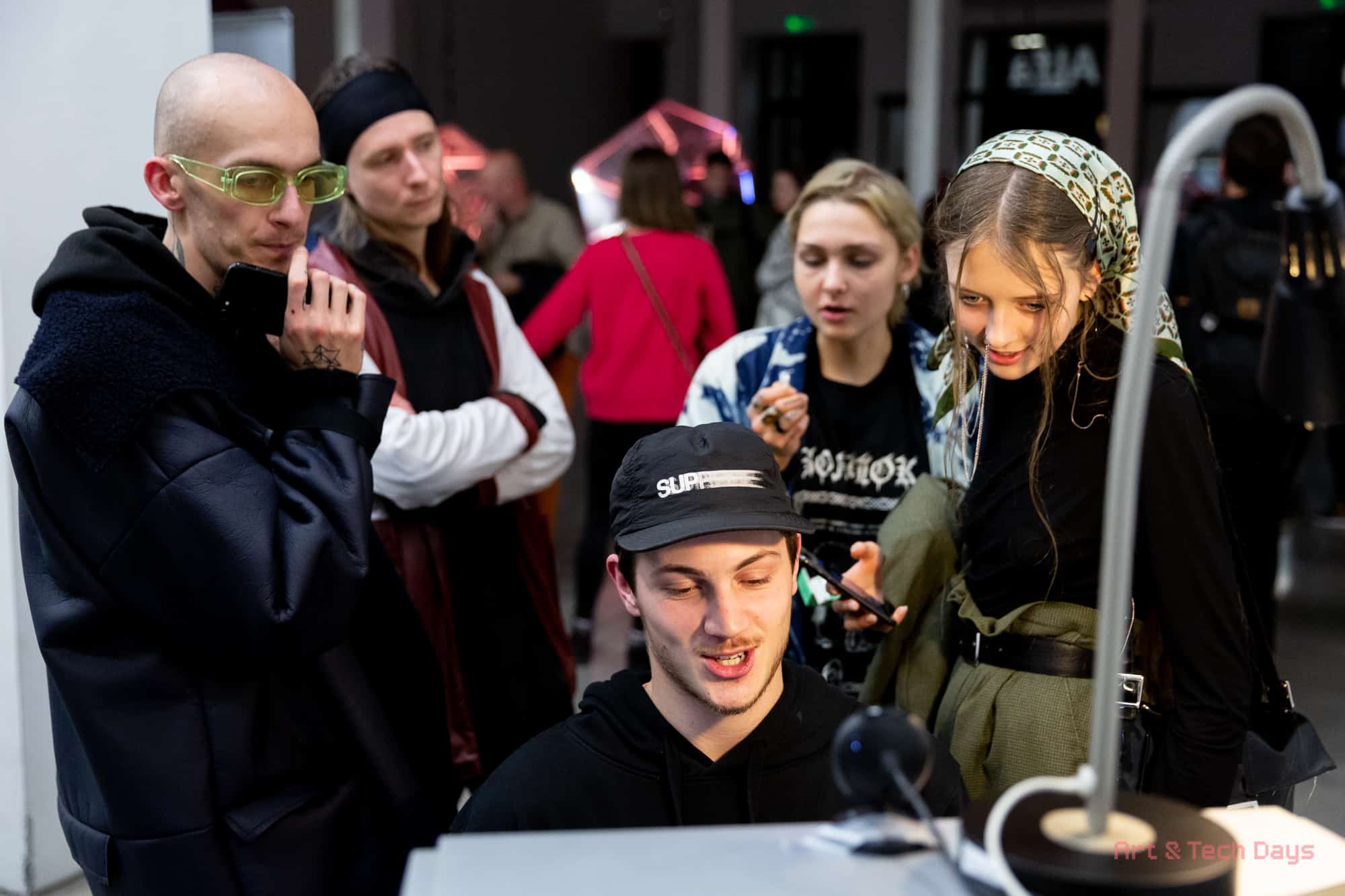
Art & Tech Days Festival 2019 © Jakub Jenčo 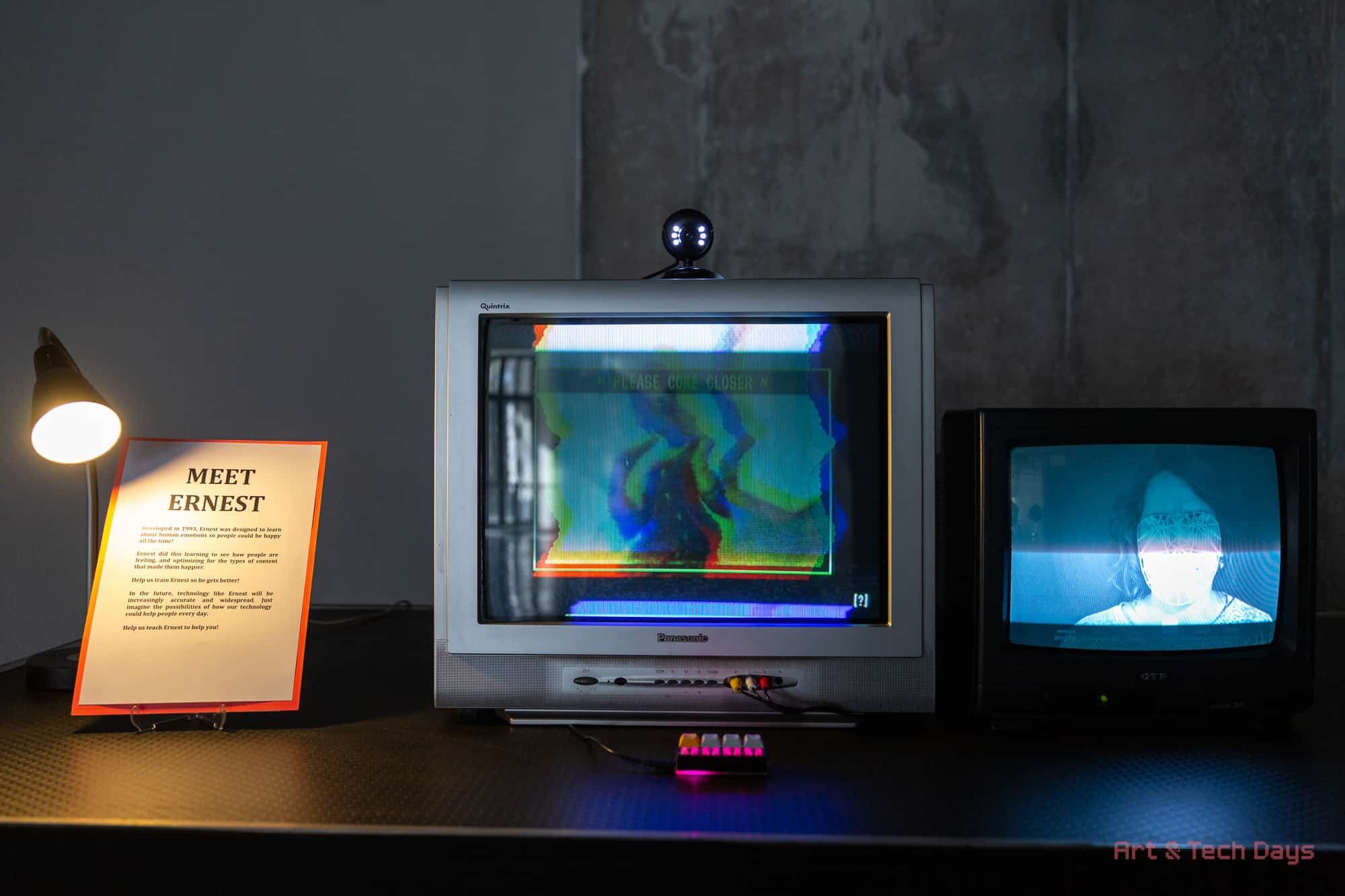
Art & Tech Days Festival 2019 © Jakub Jenčo
With its membership in the UNESCO Network of Creative Cities in the field of media arts, Košice has shown how important the development of culture and creative industry is for the city. We get opportunities to cooperate and gain visibility at the international level and exchange experiences with partner cities, but it has also contributed to our economic development.
Marcel Gibóda, Deputy Mayor of Košice

Art & Tech Days Festival 2019 © Dávid Hanko 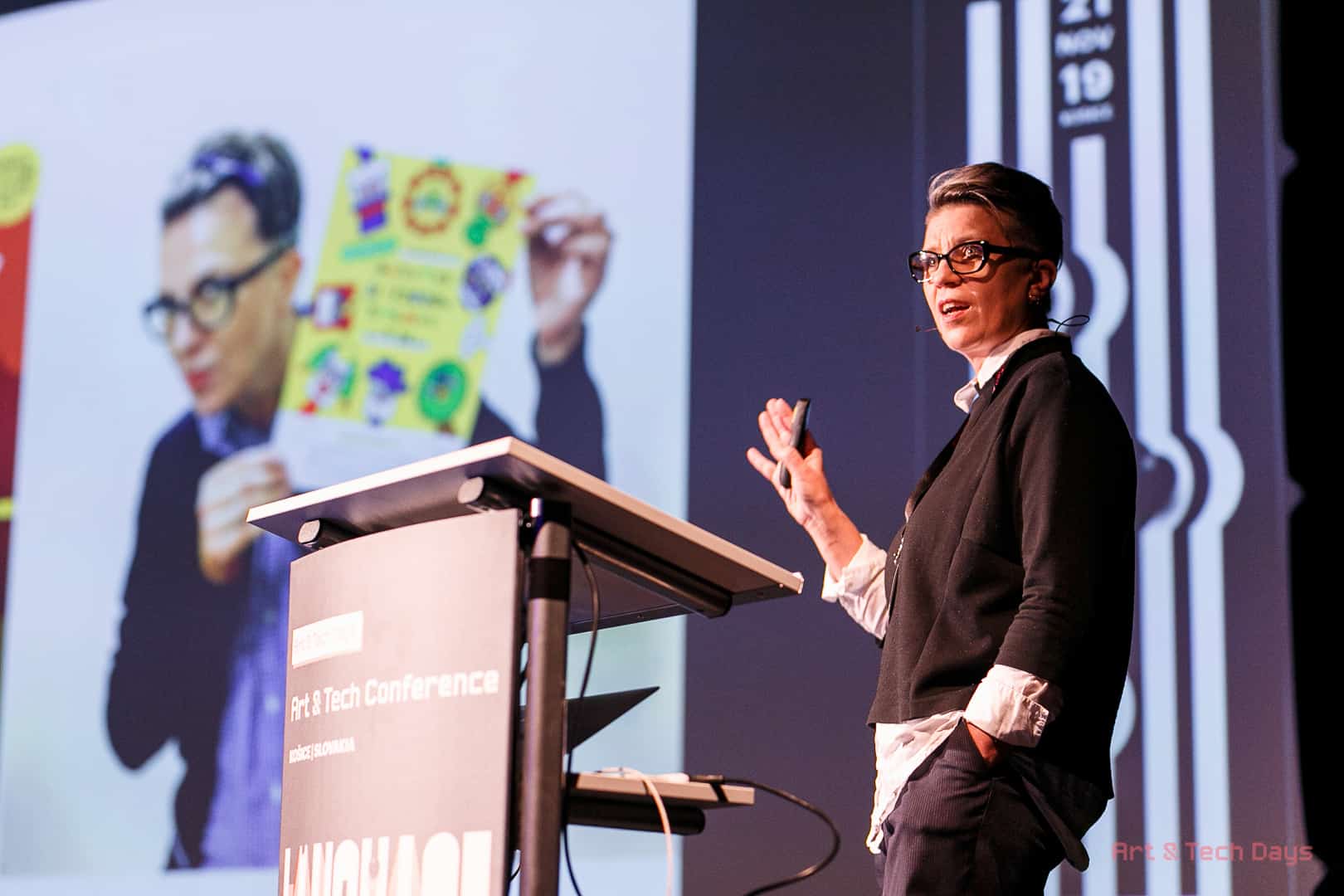
Art & Tech Days Festival 2019 © Jakub Jenčo
New art forms at the local level
The partner cities strive to create an environment that would encourage unique cross-sectoral cooperation. Art in the traditional sense thus gains a completely new dimension.
One of the places where new art forms thrive is Tabačka Kulturfabrik, a center for contemporary art. It significantly develops Košice’s independent scene, even in the field of media art. For example, a series of multimedia exhibitions called The Future is Now 2019 have introduced topics on the border of art and science, life, and cybernetics in Košice.
The Department of Fine Arts and Intermedia, which is part of the Faculty of Arts of the Technical University in Košice, is of great importance for the present and future of Košice media art. They promote the works of their students and graduates at local and international events. At the same time, they take part in the creation of development projects for the creative industry in Košice, as was the case with the UNESCO title.
The international exhibition of media art No Power No Art, led by curators Richard Kitta and Michal Murin, took place in 2019. It is part of a series of exhibitions called Creative Playgrounds, which presented a wide range of foreign artists in Košice and also provided space for the local media art scene over the course of four years. People from the DIG gallery in Košice are also behind its foundation. As the only one of its kind in Slovakia, the gallery focuses on media arts, bio-art, electronic literature, and other innovative forms of art, which have been created as a result of the overlap of science, digital technologies, and new media.
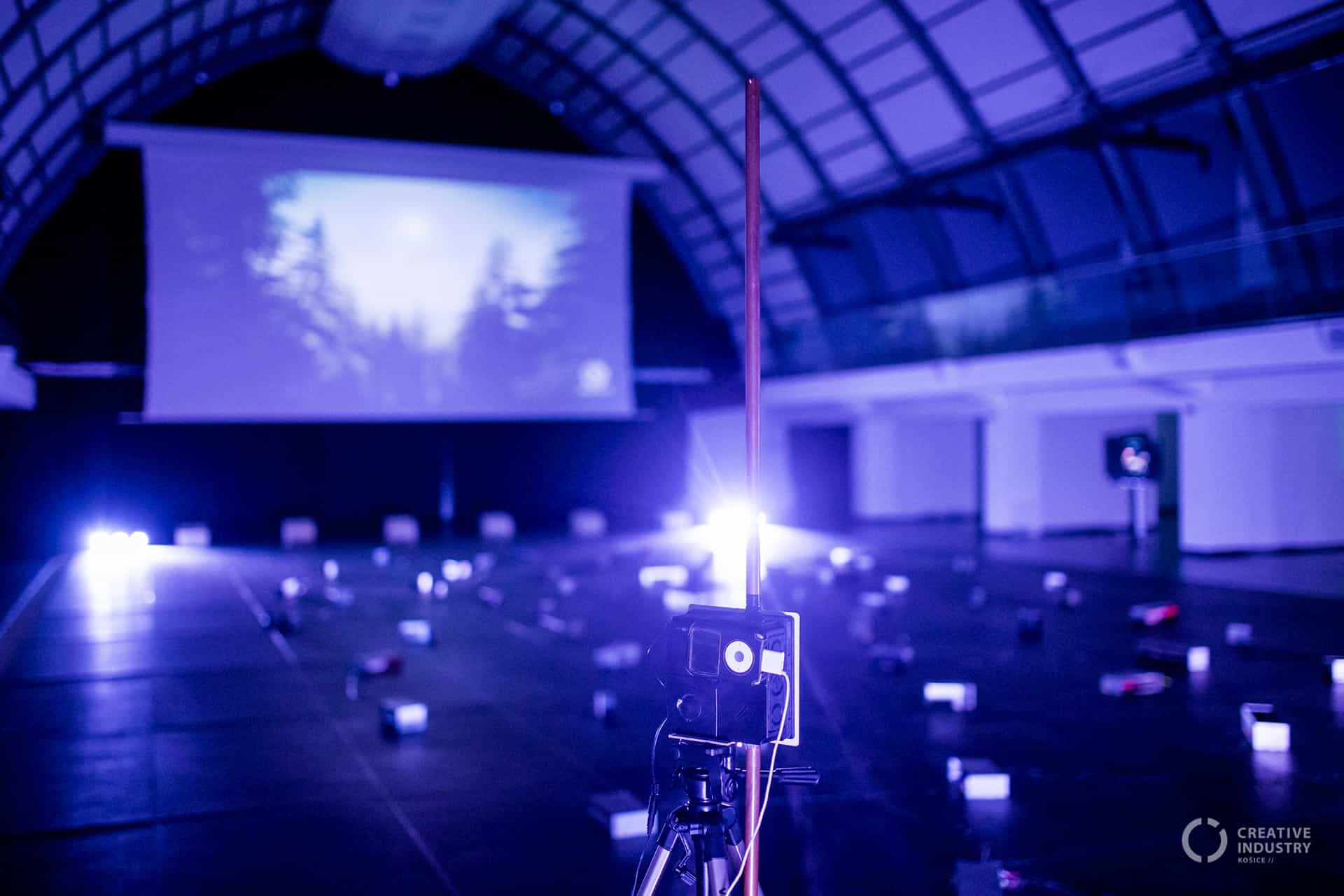
Creative Playgrounds 2019 © Dávid Hanko
Locals can also experience media art in the program of the VUNU Gallery, which annually organizes the multi-genre festival DAAVS – Days of Current Audiovisual Meetings.
For the people who come to visit Košice, they can have an unconventional tourist experience in the form of accommodation in the Media Art Room – a room in The Invisible Hotel, which celebrates the progressive media art scene in Košice. It was created and finalized by an important architect from Košice, Štefan Pacák, and Boris Vaitovič, a recognized figure in Slovak media art.
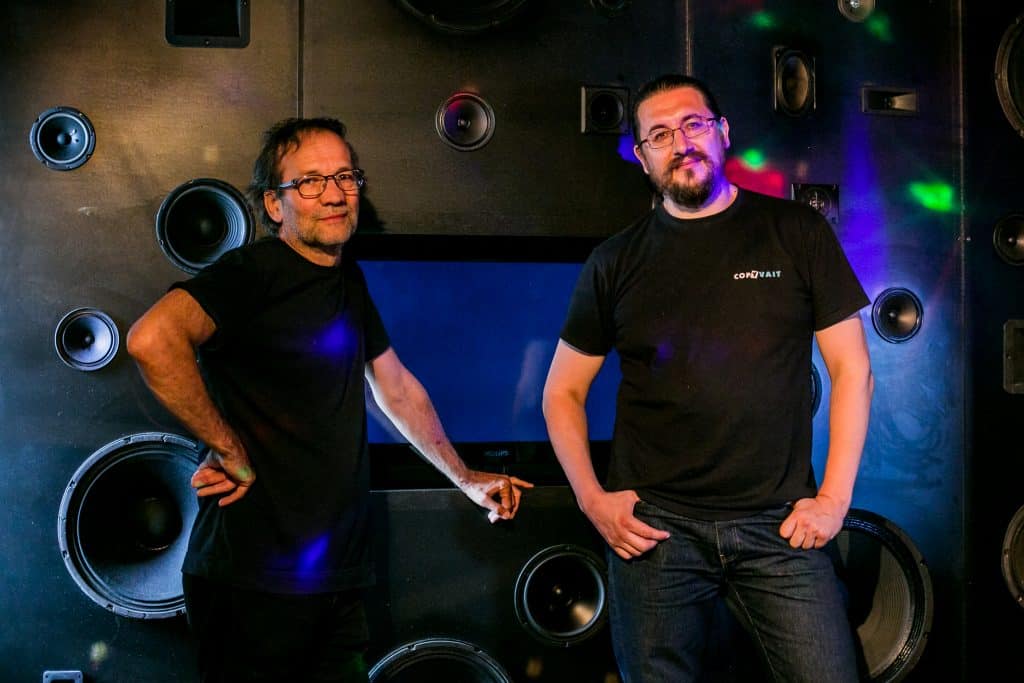
Štefan Pacák and Boris Vaitovič © Dávid Hanko 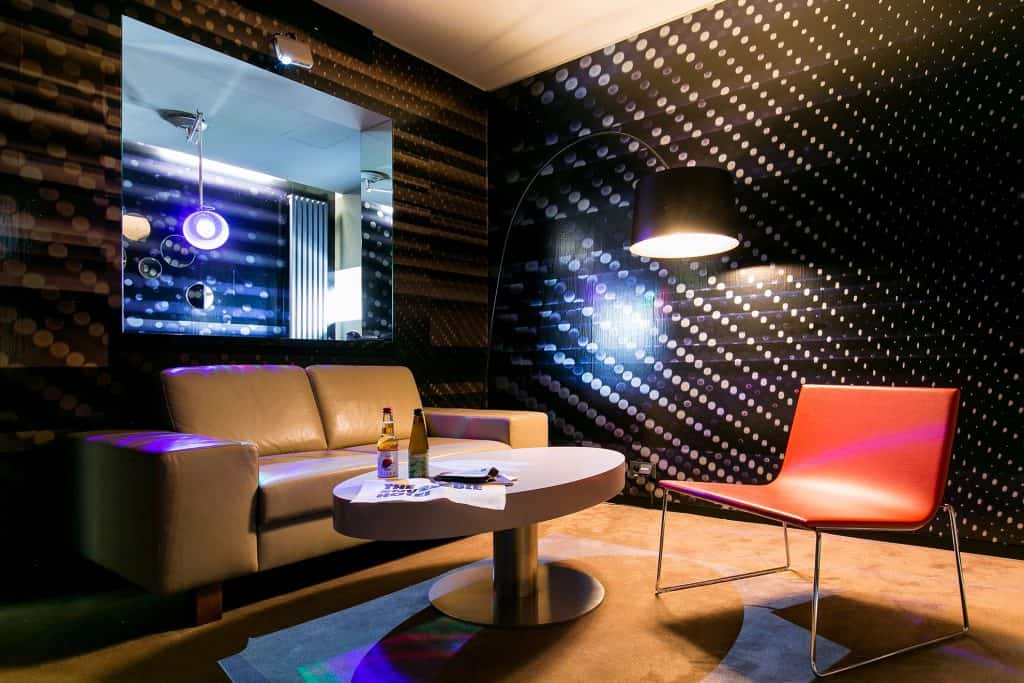
Media Art Room © Dávid Hanko
Media art has gained its audience in Košice. However, the challenge remains how to make it more accessible to the general population, to inspire and persuade them to become part of the new cultural direction themselves. A successful example of this is the popular festival of contemporary art White Night, which also exhibits media artworks.
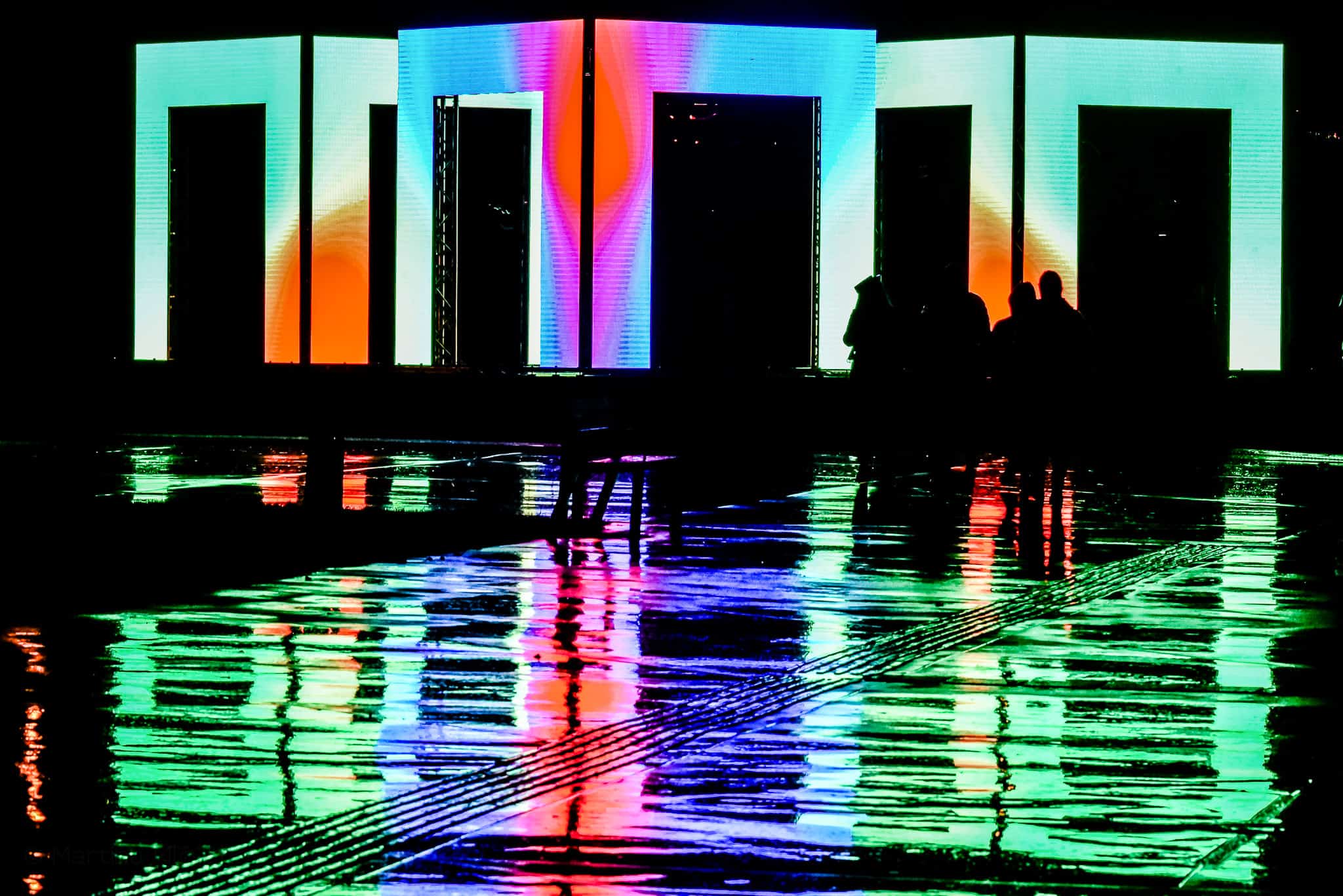
UNESCO and Art & Tech Days
Media art is an important part of the Art & Tech Days festival, especially in the form of interactive installations and multimedia performances. The theme of the fifth edition is Human Responsibility, which also builds on the goals of UNESCO Creative Cities in fulfilling the 2030 Agenda for Sustainable Development. One of the partners of the festival is the cluster of tech companies in Košice called IT Valley, which reaffirms the importance of cross-sectoral cooperation.
The UNESCO Network of Creative Cities is a valuable source of inspiration for Košice’s media art. For Art & Tech Days, the biggest inspiration is the largest world-renowned media art festival Ars Electronica, which takes place every year in our partner city, Linz.
International artists on residencies in Košice
Being a part of the international club of creative cities means for Košice the opportunity to present itself beyond the borders, establish cross-border cooperation, and become an attractive destination for artists and tourists.
In this regard, Creative Industry Košice started a residency program in 2019 together with K.A.I.R. – Košice Artists in Residence. The first participating artist was Marc Vilanova (ES), who introduced the connection of music and technology in the old synagogue. He was also a speaker at the conference during the Art & Tech Days festival. This year, media artist Abel Korinsky (GR) will come to Košice. Within two months, he will create an audiovisual work using data from Starlink satellites. These were brought into orbit by the company SpaceX, which is owned by the world-famous Elon Musk. These satellites regularly circle over Košice.

Marc Vilanova in old synagogue © Maja Bodnárová 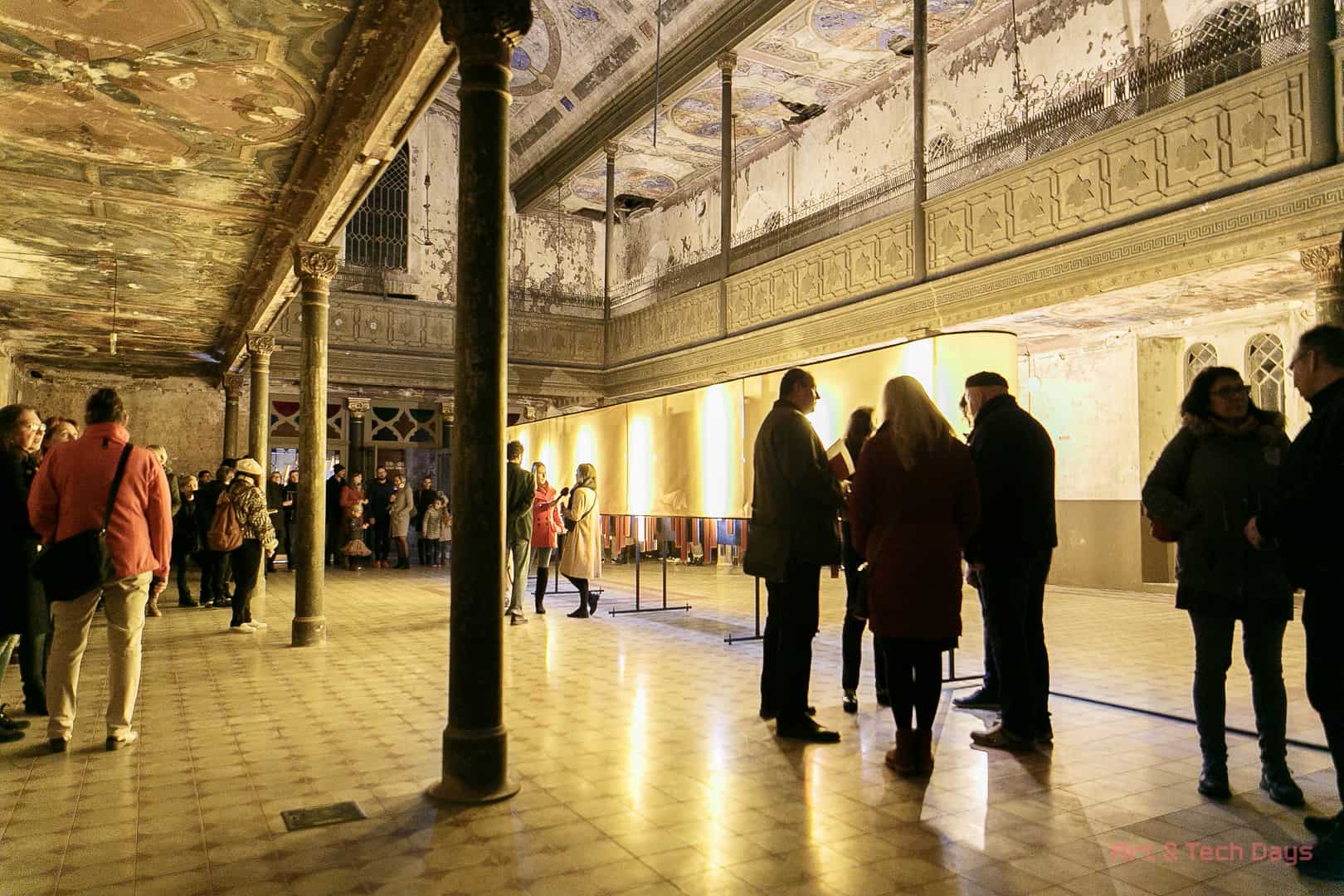
Marc Vilanova in old synagogue © Maja Bodnárová
The pilot project City to City – Human Responsibility gives Košice media artists the opportunity to become part of a month-long online creative process. During it, 10 artists from 10 UNESCO Creative Cities will create 5 works of art which will reflect the responsibility of art and technology in relation to the planet and society. These will be exhibited at the Art & Tech Days festival in Košice, the British York Mediale, and other festivals of participating cities until 2022.
Košice as an example for other cities
In the field of media art, Košice clearly has something to offer to other partner cities. Creative Industry Košice regularly represents the city at international partner meetings, where it presents individual initiatives from creative industries and the field of media art, gathers new contacts, establishes cooperation, and participates in the preparation of strategic documents of the UNESCO Network of Creative Cities.
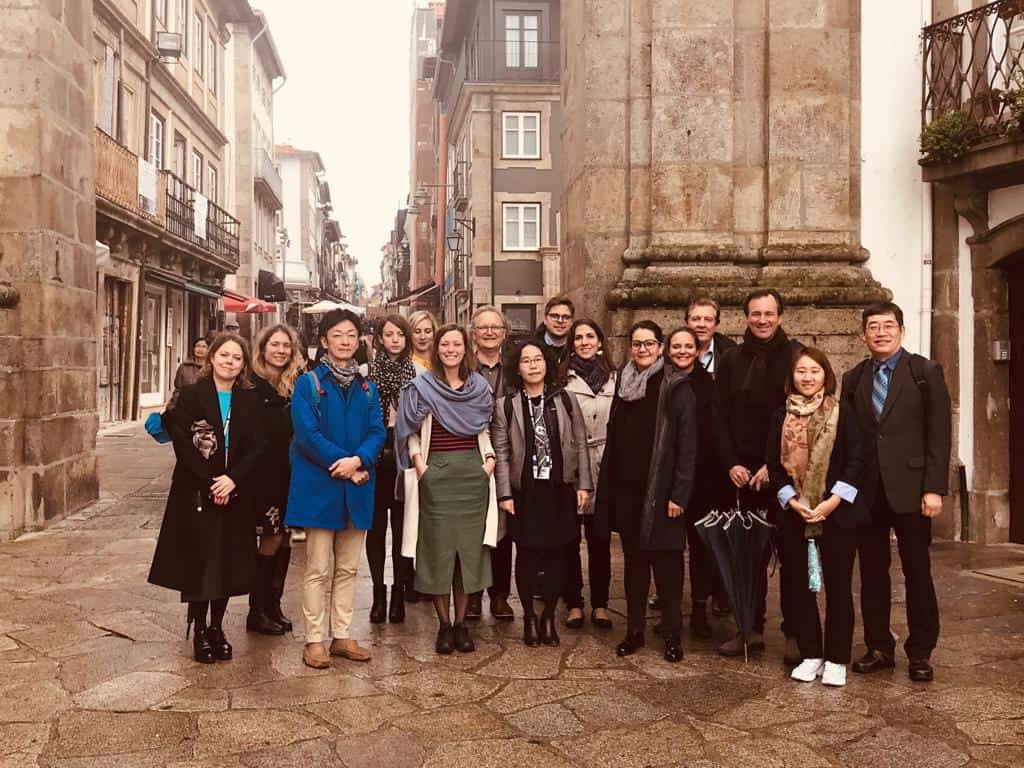
UNESCO Creative Cities Annual Conference 2019 © archive CIKE 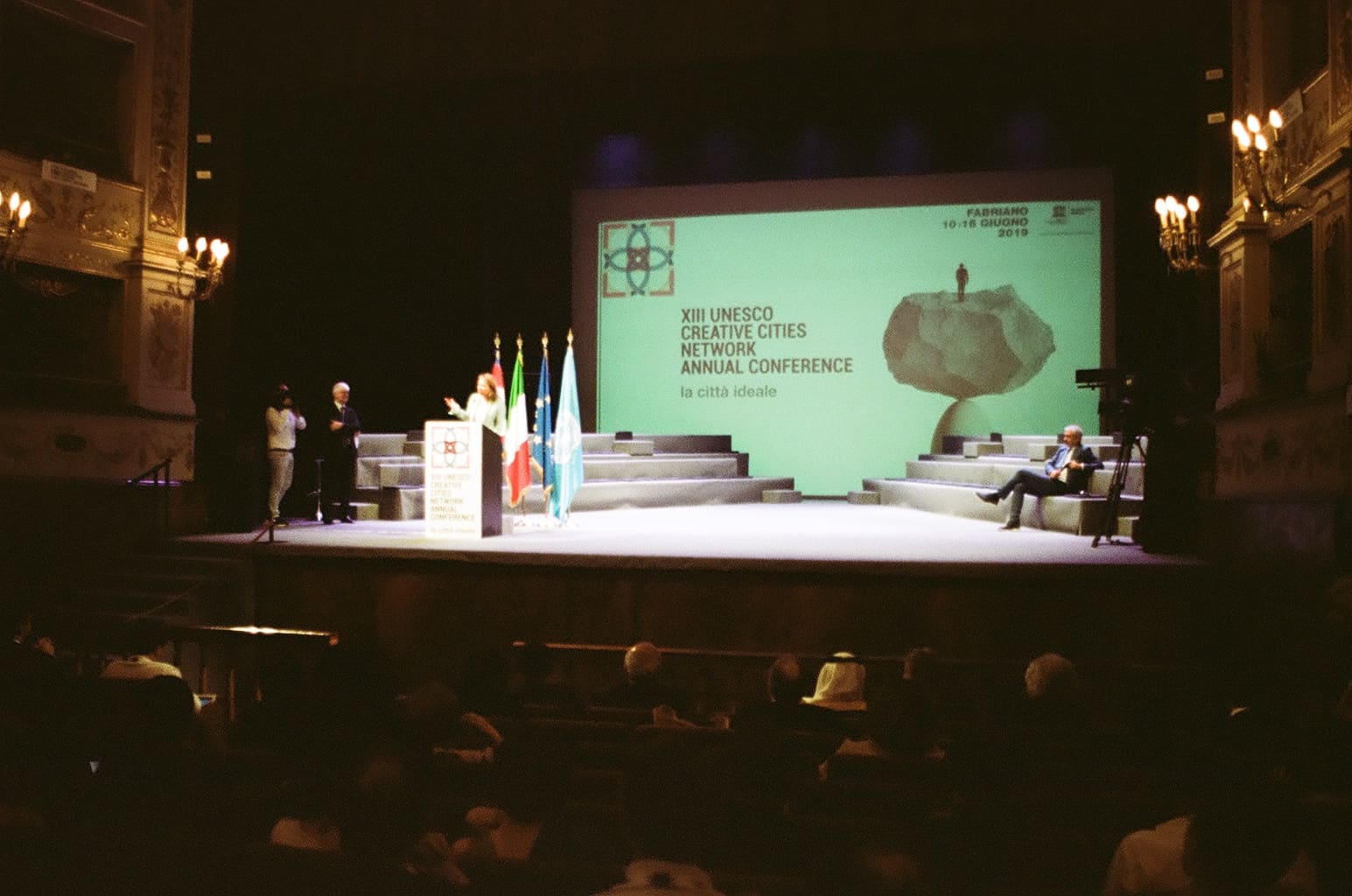
UNESCO Creative Cities Annual Conference 2019 © archive CIKE
According to Michal Hladký, the connection between digital technologies and creativity represents a unique competitive advantage for the city of Košice. “The role of CIKE is to help create the conditions for such cooperation in the city and to help its development.”
The ambition still remains to create a creative center focusing on media art, digital technologies, and design. Košice can also look forward to media art installations which will bring this form of art closer to ordinary people. In addition, the idea of an urban game, which would connect the population and the public sector, enable more effective access to services, and playfully engage Košice residents in creating a better city, is still possible.
For the project UNESCO Creative Cities of Media Arts, the door is still open to other partners, including schools and individuals. “We have the experience, we have the tools, we can provide the know-how. What we need are people who want to turn their own creativity into added value for the city in which they live and work,” adds Michal Hladký.
More information about the UNESCO Creative Cities of Media Arts project can be found at cityofmediaarts.sk.
